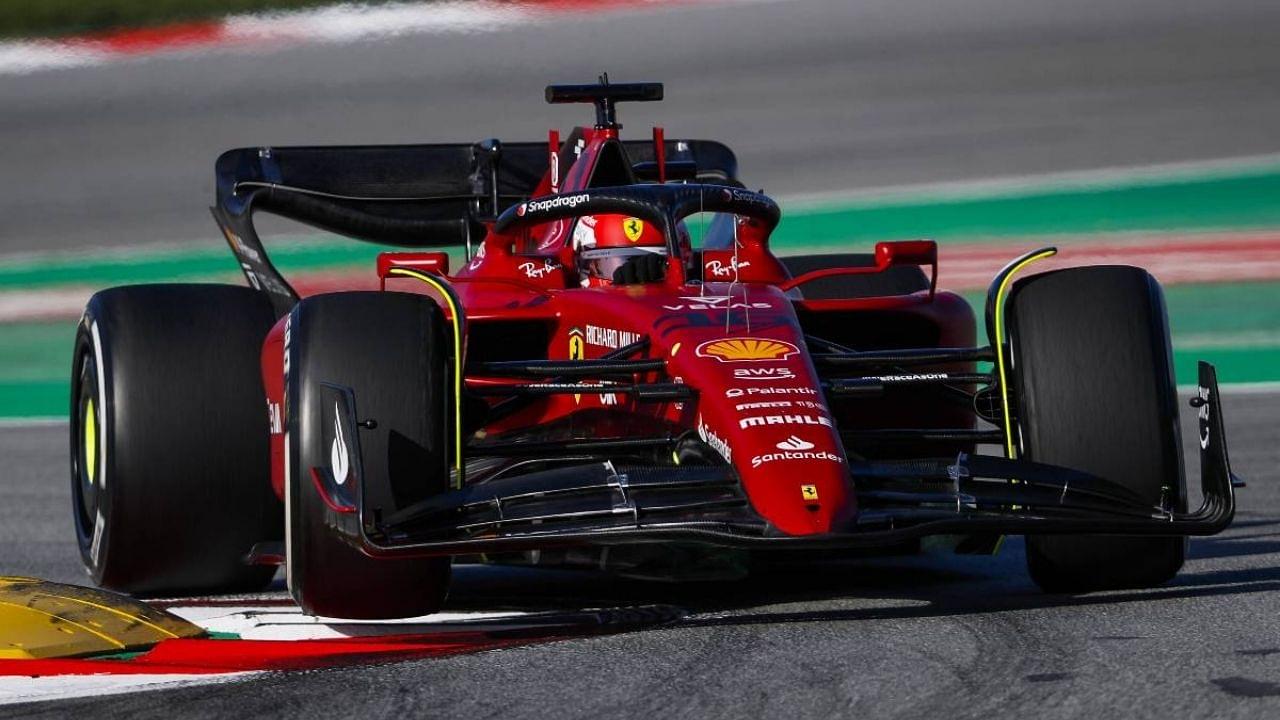When it comes to the porpoising effect on the F1 2022 cars, Former Ferrari aerodynamicist believes we’ve only seen the tip of the iceberg.
The first testing of the new era cars comes to an end in Barcelona with Mercedes, Red Bull, and Ferrari coming on top. However, the main topic of discussion was when the audience was shocked to see the ‘porpoising’ effects on the car. This is the first time since this phenomenon has happened in Formula 1 since the 1980s.
Porpoising happens when the car is pushed down due to the downforce causing the underfloor aero to stall. In this process, the car rises off from the track and is pushed to the ground again creating a bouncy effect.
As per the former F1 aerodynamicist Jean-Claude Migeot, this is just the tip of the iceberg. There are more problems ahead that the F1 teams are not aware of.
Ferrari made Charles Leclerc a little bit sick
F1 teams have confirmed that this effect is taking a toll on the drivers. Charles Leclerc recently experienced the effect in his Ferrari F1-75 making him feel sick.
Aston Martin and McLaren have been the teams struggling most with the effect as per analyst Jolyon Palmer. McLaren is confident that by the first five or six races, this effect will be eliminated. However, as per Migeot, teams have very little freedom on the mechanical side.
Also Read: Antonio Giovinazzi is set to replace Nikita Mazepin as the new Haas F1 driver for the 2022 season
“You cannot ignore the optimization of the static forces that put the car in the best position for whatever corner you choose. That is strategic,” he added.
The solution is only for the teams to get their car in the wind tunnel and run tests with static forces as per him.
Bumpy road to the top for Charles Leclerc! 🤕#F1 pic.twitter.com/Z6a5e6d3bo
— Formula 1 (@F1) February 24, 2022
‘Nasty Suprise’ if the teams fail to eliminate the effect
As per him, when the tracks are bumpy the porpoising effect will get worse. To further explain this, he added: “It’s going to be tragic on a bumpy track, and it’s going to be tragic in racing. That is because when you’re hard braking for overtaking you’re going to excite this phenomenon a lot.”
Also Read: Max Verstappen is ready to battle with Lewis Hamilton in the upcoming season
The former Renault specialist has urged the FIA to intervene as we have only seen very little in Barcelona. “So we’re maybe going to see very bad things. I think the FIA will react before that. If nobody has time to find the best solution, the FIA will have to react.” he said.
“I hope to be wrong, of course, because it will be a nasty surprise,” he concluded.
Some rumors saying that McLaren have introduced a solution for porpoising, the the bouncing of the car on a straight line that was seen on friday. MCL36’s floor seems to bend over at high speed, around 300km, creating a type of skirt. Probably in next test all teams will copy #F1 pic.twitter.com/DpjtzlL9Ju
— Technical Racing (@TechnicalRacing) February 28, 2022







